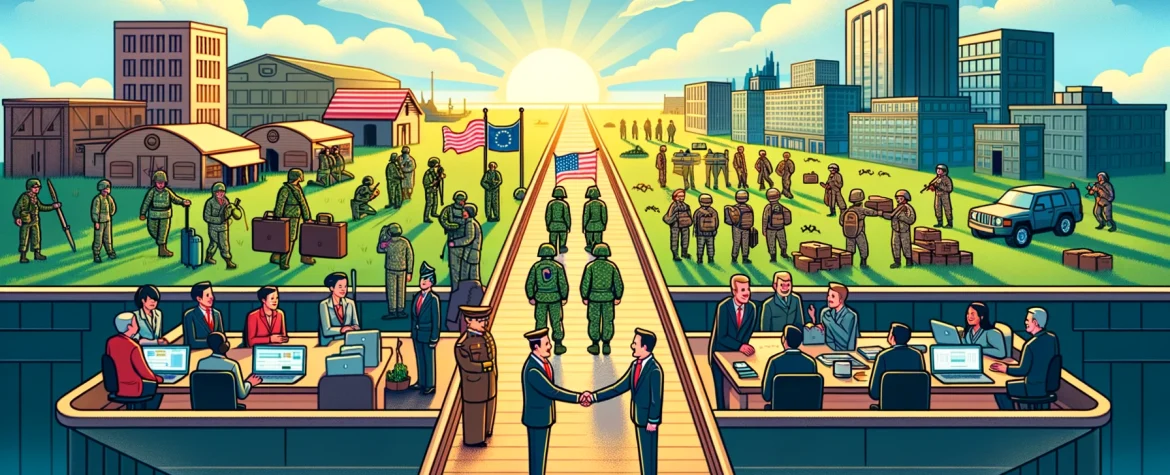Invest in Veteran Week: Bridging the Civil-Military Employment Divide
- Home
- Invest in Veteran Week: Bridging the Civil-Military Employment Divide

- Editors Desk
- March 1, 2024
- 0 Comments
As part of our Invest in Veteran Week series, No Worker Left Behind is proud to present a critical discussion topic that examines the persistent challenges and untapped opportunities within the veteran workforce. Our focus is to dissect the civil-military employment divide and explore how businesses, policymakers, and communities can more effectively integrate veterans into the civilian job market.
Veterans bring a wealth of experience, discipline, and skills to the table – the kind of traits any employer would value in a workforce. However, the transition to civilian employment is often fraught with barriers that prevent veterans from fully utilizing their potential in the job market.
1. What are the current barriers that veterans face when transitioning to civilian employment, despite the skills and experiences they bring from military service?
For many veterans, the first hurdle is cultural. The military operates under a set of norms and codes that can be vastly different from those in civilian workplaces. This can make acclimating to a new work environment challenging. Additionally, veterans often struggle with effectively communicating their military experience in terms civilian employers can appreciate and understand.
2. How can we better translate and recognize military-acquired skills in the civilian job market?
One solution is the creation of crosswalks or translation guides that match military skills with civilian job requirements. Providing certification and accreditation for skills gained in service can also ease this transition, as can career counselling that focuses on articulating these skills in resumes and job interviews.
3. What role do misconceptions and stereotypes about veterans play in hindering their employment prospects?
Stereotypes about veterans can unfortunately lead to biases in the hiring process. There is a need to educate employers about the reality of veteran capabilities and to dispel the myths that may contribute to veterans being overlooked for positions for which they are well-qualified.
4. How can public and private sector partnerships be strengthened to create more effective veteran employment programs?
Partnerships that bring together businesses, non-profits, and government agencies can lead to more comprehensive support systems for veterans. These collaborations can result in tailored training programs, internships, and hiring initiatives that directly address the employment needs of veterans.
5. What innovative approaches or programs have shown success in other countries that could be adapted to support veterans in our workforce?
Other countries have developed successful models that might inspire similar success stories in our own. For example, some nations have veteran-specific employment agencies that not only help veterans find jobs but also work with employers to create veteran-friendly workplaces.
6. Discuss the importance of mental health support services in ensuring a successful transition for veterans into the workforce.
Mental health support is crucial. Transitioning from military to civilian life can be a significant source of stress and can exacerbate existing conditions. Mental health services that are accessible and adequately funded help veterans to manage these challenges and contribute to their readiness for civilian employment.
7. How can we foster a culture of continuous investment in our veterans, not just during their service or immediately after, but throughout their careers?
A culture of continuous investment means seeing veteran support not as a one-time benefit but as an ongoing commitment. This can involve mentorship programs, career development opportunities, and the recognition of the unique perspectives and skills veterans bring to the workplace over the long term.
We aim to not only shed light on these issues but also to generate actionable solutions that will ensure no veteran worker is left behind in our evolving economic landscape.
